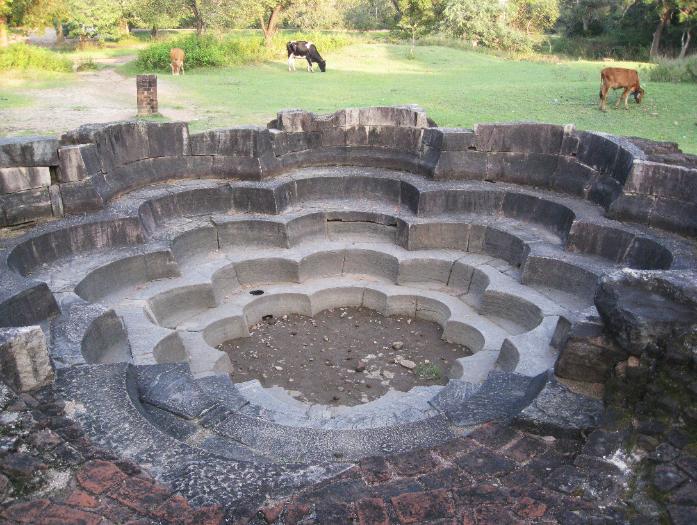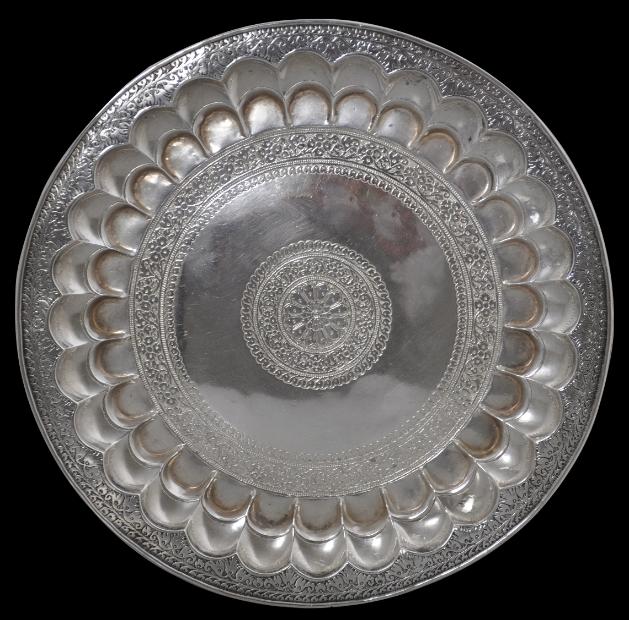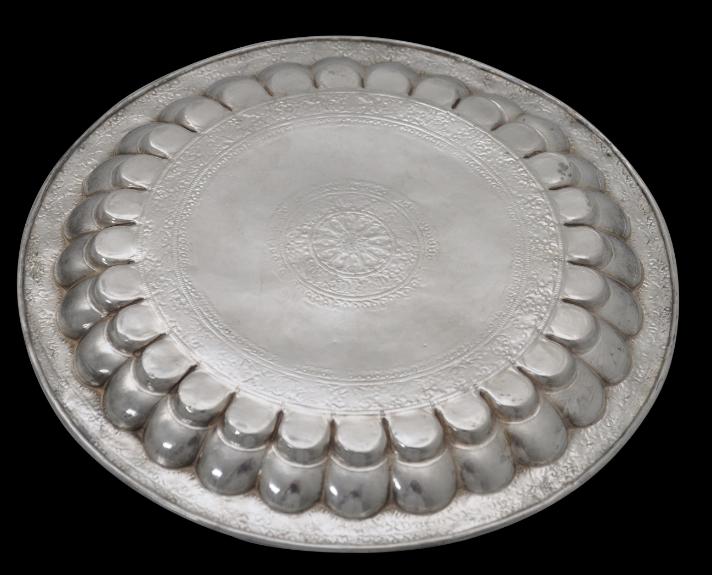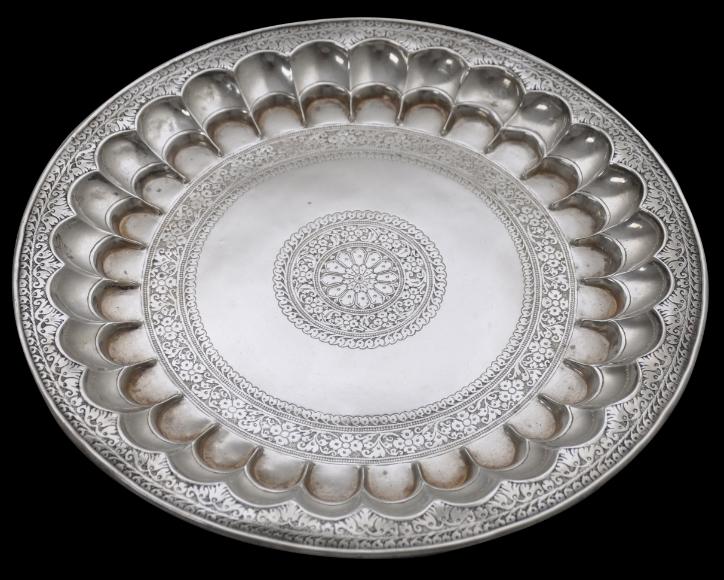
Mughal Silver Salver (Thali), Deccan or Northern India, 18th century
Fine Mughal Silver Salver (Thali)
Deccan or Northern India
18th century
diameter: 23.9cm, weight: 335g
This Deccan/Mughal thali or dish is a particularly fine example. It is also of good weight. The silver content is also high. The well is deep and the lotus-petal sides are more inclined than is usual.
The
thali is of beaten silver and has been chased and engraved with a central lotus flower medallion. It is bordered by double fluted bands of scalloped lotus petal niches and a lipped rim. Double rows of fluting is characteristic of the silversmithing work undertaken in Pune and the surrounding region.Thalis such as this were used at elaborate Deccan and Mughal feasts. Each guest was served with his own thali, made either of silver or gold. Originally, precious metals were preferred as they were believed to detect poison. Later, they were preferred simply for reasons of ostentation.
A
thali of almost identical form and design is in the collection of the Victoria & Albert Museum and illustrated in Terlinden (1987, p. 104). A similar but larger thali is in the Los Angeles County Museum of Art, (inventory no. AC1999.248.1) and is illustrated in Arts of Asia, July-August, 2002, p. 32.
The example here is without repairs. It has a fine patina.
References
Terlinden, C., Mughal Silver Magnificence, Antalga, 1987.
Provenance
UK art market
Inventory no.: 4664
SOLD
here
here

Polonnaruva in central Sri Lanka has a well of basalt arranged in a form that is not unlike the salver or plate here.




